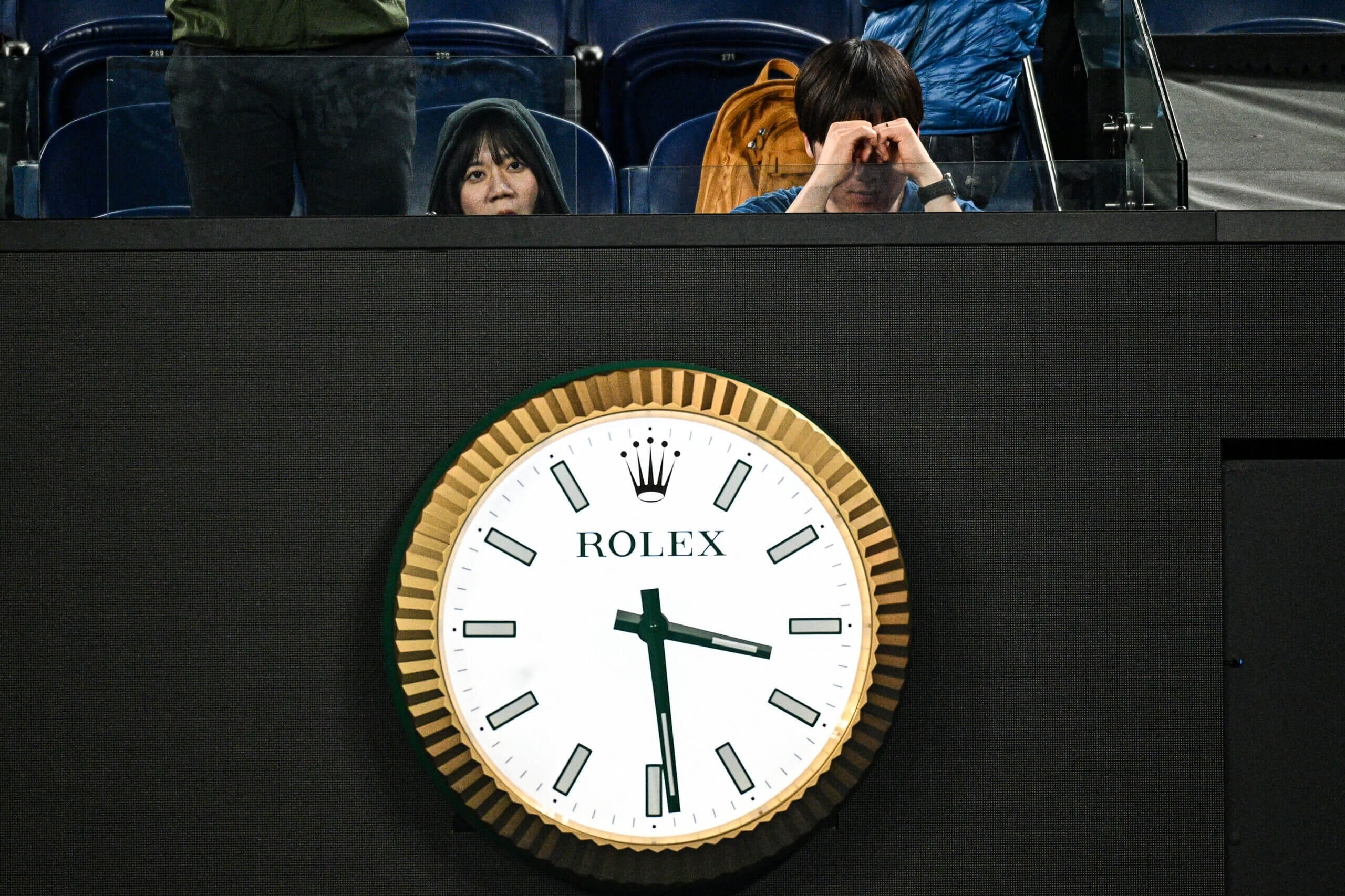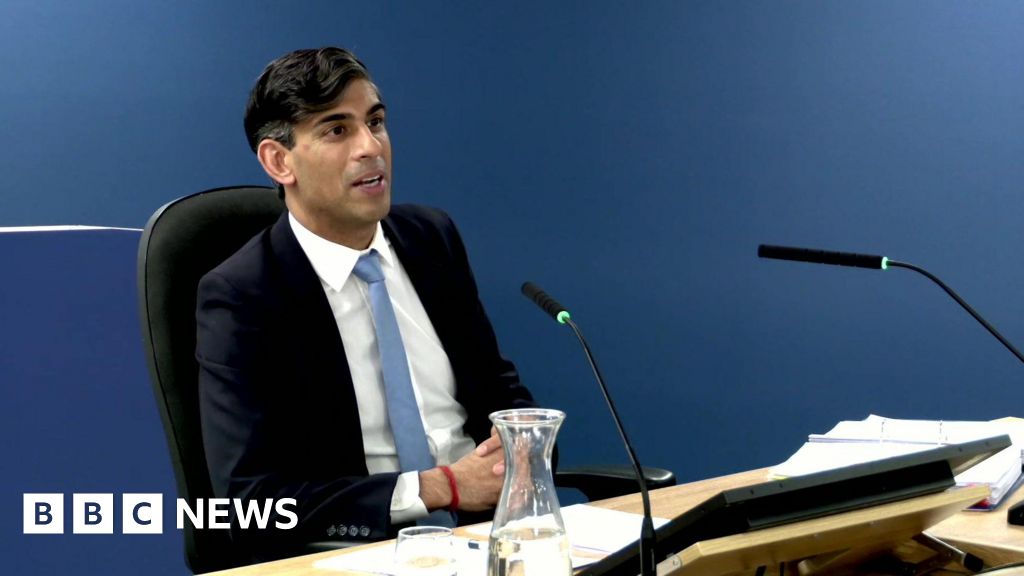
Medvedev’s 3.40am finish is latest absurd example of why tennis has to change
- Sports
- January 21, 2024
- No Comment
- 129
It happened again. Of course it did.
Two tennis players, starting near midnight, battling nearly to sunrise in front of a scattering of fans, with a squad of kids in their early teenage years scurrying after balls at nearly four in the morning.
Last year it was Andy Murray duelling with Thanasi Kokkinakis until the night sky began to lighten at around 4am. On Thursday, and into Friday, it was Daniil Medvedev of Russia and Emil Ruusuvuori of Finland doing the tennis version of the 2am jazz set.
“I would not have stayed,” Medvedev said in an on-court interview after he completed his comeback from two sets down and eliminated Ruusuvuori 3-6, 6-7(1), 6-4, 7-6(1), 6-0. Judging from the scoreline, Ruusuvuori decided not to and it was hard to blame him.
The dynamic would seem absurd if it wasn’t so routine. The main two tournaments where this happens, the Australian and U.S. Opens, seem to treat this as a badge of honor rather than a serious risk for the players involved, especially the one that wins the match, gets to bed some time around 6am, then has to come back the next day.

(Kelly Defina/Getty Images)
Medvedev was floating around Melbourne Park by mid-afternoon on Friday after grabbing a strange night of sleep and trying to figure out how to prepare for his Saturday evening match against Felix Auger-Aliassime of Canada.
“I wake up for my match today at 7 and I’m sure that’s when he went to sleep,” Karen Khachanov, Medvedev’s good friend and fellow Russian said on Friday after his win over Tomas Machac of the Czech Republic. “There should be certain limits because especially the best-of-five, you know that match can go up to five hours and then you start at 11pm. This is not normal, not healthy for anybody to recover, to get ready for the next day, the next match. You lose a complete night of sleep. Sleeping is part of the recovery, one of the biggest parts. The food, everything we do, treatments, ice baths. All this stuff and you don’t sleep. So how are you going to feel the next day?”
In recent years, a growing number of players have said enough is enough.
“Late-night matches don’t only harm players — they have negative consequences for fans, ball kids, event employees, and all stakeholders involved,” Ahmad Nassar, the executive director of the Professional Tennis Player Association, the organization Novak Djokovic co-founded in 2020 to address, among other issues, working conditions for arguably the most important people in the sport. “From a health and safety standpoint, it’s not optimal, it’s frankly not fair,” Nassar said.
Pressure from the PTPA – as well as Jannik Sinner’s decision to pull out of the Paris Masters in November after he won a match that started at 12.30am and finished at nearly 3am — helped force officials with the men’s and women’s tours, the ATP and the WTA, to agree to prohibit matches from starting after 11pm as of next year. Matches scheduled for a court that is still being used after 10.30pm will be moved to another court and both tours have told tournament organizers they want night sessions to begin at 6.30pm rather than 7 or 7.30pm, with no more than two matches on the night schedule.

(Jean Catuffe/Getty Images)
However, tennis being tennis, with seven different organizations empowered to enact their own rules with little input from active players, the four most important tournaments — Wimbledon, the U.S. Open, the Australian Open and the French Open — do not have to follow this rule.
Late-night finishes are not an issue at Wimbledon, which has an 11pm curfew, or at the French Open, which schedules just one match in its night sessions, but Melbourne and New York do not adhere to curfews, so some of their greatest matches end up unfolding in front of a few hundred hardy souls.
“It’s a very obvious thing that needs to change,” Andy Murray said last week of the late-night starts and finishes and the tour rule changes. “From a player’s perspective, it’ll definitely help with recovery for the following day’s matches and things like that. I certainly think for the fans and the tournament, it just probably looks a wee bit more professional if you’re not finishing at three or four in the morning.”
Tennis Australia made some tweaks to the tournament this year that it said were aimed at avoiding late-night starts and finishes. Most notably, it has scheduled just two afternoon matches on the main show courts rather than three, lessening the chance of a late start to the evening session.
It expanded the first round to three days from two, allowing more room to schedule the first 128 singles matches. That has had little effect on late starts because the evening session start time remained 7pm and because tennis matches are longer than they used to be because there is more depth, more athleticism and points, thereby games, sets and matches last longer.
On the opening night, the women’s defending champion, Aryna Sabalenka, walked onto the court at 11.30pm following Novak Djokovic’s four-hour fight with Dino Prizmic.
It should be noted, and Tennis Australia officials made a point of doing so, that a cascading series of events led to the late start and finish on Thursday.
Two unexpected rainfalls occurred early in the afternoon, the first of which delayed play on Rod Laver Arena because rain was not in the forecast and its roof was open. Iga Swiatek generally blows through matches like she has a Taylor Swift concert to get to, but her duel with Danielle Collins lasted more than three hours.

(Robert Prange/Getty Images)
Then Carlos Alcaraz’s win over Lorenzo Sonego lasted nearly three and a half hours. Since play in Rod Laver does not start until noon, compared with 11am on other courts, the long afternoon matches pushed back the 7pm start of the evening session. Then the first evening match, between Elena Rybakina and Anna Blinkova, lasted nearly three hours and included a deciding-set tiebreaker with a final score of 22-20, the longest tiebreaker in Grand Slam history.
Medvedev stood in the tunnel for half an hour waiting for it to end. He finally took the court at around 11.30pm. Another, albeit smaller, show court, roughly 250 meters from Rod Laver, had been available for nearly two hours at that point. Four hours and five sets later, Medvedev was in the third round.
Two men’s and two women’s matches on average at the Australian Open should account for about nine hours of tennis. On Thursday and into Friday morning, the action on Rod Laver lasted nearly 14 hours.
There was even one benefit of the late, late finish that officials with Tennis Australia touted on Friday afternoon in the bleary light of the day. They had been looking at social media and saw lots of fans in Europe and the United States, who, given the double-digit-hour time difference, got to enjoy Medvedev’s triumph through a chunk of their workday.
All it took was for the world No 3 to pull an all-nighter.
(Top photo: Anthony Wallace/AFP via Getty Images)
#Medvedevs #3.40am #finish #latest #absurd #tennis #change









